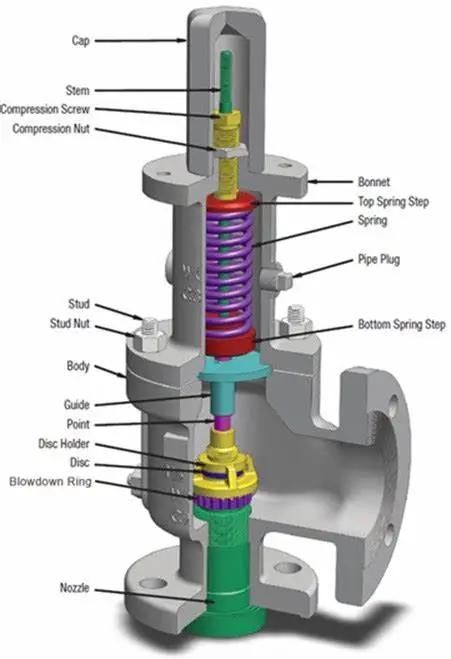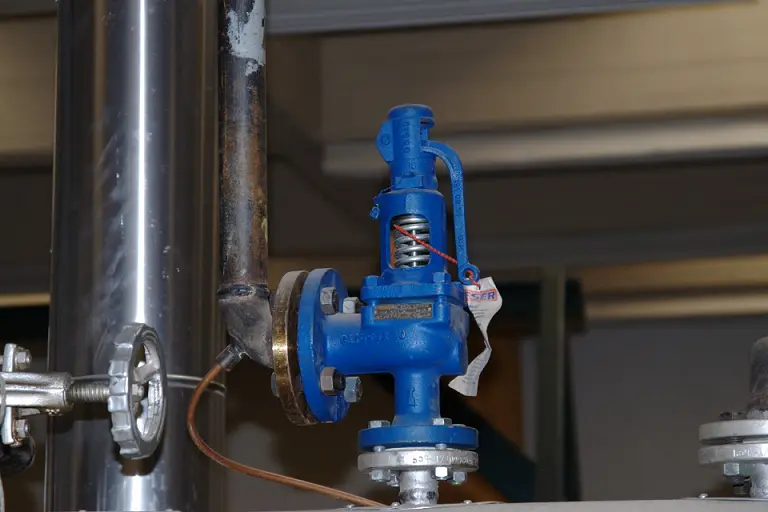How to calculated sizing for safety valve (Pressure relief valve)
Safety valves and pressure relief valves are very important for just one primary reason: safety. What this means is safety for that plant and equipment in addition to safety for plant personnel and also the surrounding atmosphere.
Safety valves and pressure relief valves safeguard vessels, piping systems, and equipment from overpressure, which, if unchecked, can't only damage a method but potentially cause a surge. Since these valves play such a huge role, it?ˉs essential the right valve can be used each time.

Listed here are six factors to be considered when choosing and sizing safety or pressure relief valves.
1. Connection size and type
The valve size must match how big the inlet and discharge piping. The Nation's Board specifies the both inlet piping and also the discharge piping attached to the valve should be a minimum of the size of the inlet/discharge opening around the valve itself.
The bond types will also be important. For instance, may be the connection male or female? Flanged? Many of these factors help pick which valve to make use of.
2. Set pressure (PSIG)
The set pressure, that is measured in pounds per sq . inch (PSIG), may be the pressure where a security or pressure relief valve opens.
The set pressure from the valve mustn't exceed the maximum allowable working pressure (MAWP) from the boiler or any other vessel. This means the valve must open at or underneath the MAWP from the equipment. Consequently, the MAWP from the equipment ought to be a minimum of 10% more than the greatest expected operating pressure under normal conditions.
3. Temperature
Temperature affects the amount and viscosity from the gas or liquid flowing with the system. Temperature likewise helps determine the perfect material of construction for that valve. For instance, steel valves are designed for greater operating temperatures than valves made from either bronze or iron. Both operating and also the relieving temperature must be taken into consideration.
4. Back pressure
Back pressure, which can be constant or variable, is pressure around the outlet side from the pressure relief valve because of pressure within the discharge system. It may modify the set pressure from the upstream valve and make it pop open frequently, which can harm the valve.
For installations with variable back pressure, valves ought to be selected so the back pressure does not exceed 10% from the valve set pressure. For installations rich in amounts of constant back pressure, a bellows-sealed valve or pilot-operated valve might be needed.
5. Service
Various kinds of service (steam, air, gas, etc.) require different valves. Additionally, the valve material of construction must be suitable for the service. For instance, valves made from stainless are more suitable for corrosive media.
6. Needed capacity
Safety valves and relief valves must have the ability to relieve pressure in a certain capacity. The needed capacity is dependent upon several factors such as the geometry from the valve, the temperature from the media, and also the relief discharge area.
The needed capacity is placed through the relevant code. It is almost always expressed in:
LBS/HR ¨C pounds each hour (steam flow),
SCFM ¨C standard cubic ft each minute (air or gas flow), or
GPM ¨C gallons each minute (liquid flow).
These are merely the fundamental factors to be considered when choosing and sizing safety valves and relief valves. You need to think about the physical size of the gear and also the plant, along with other factors associated with the atmosphere where the valve will operate.

Click This Link To Get To Know More About Our Safety Valve Product Ranges